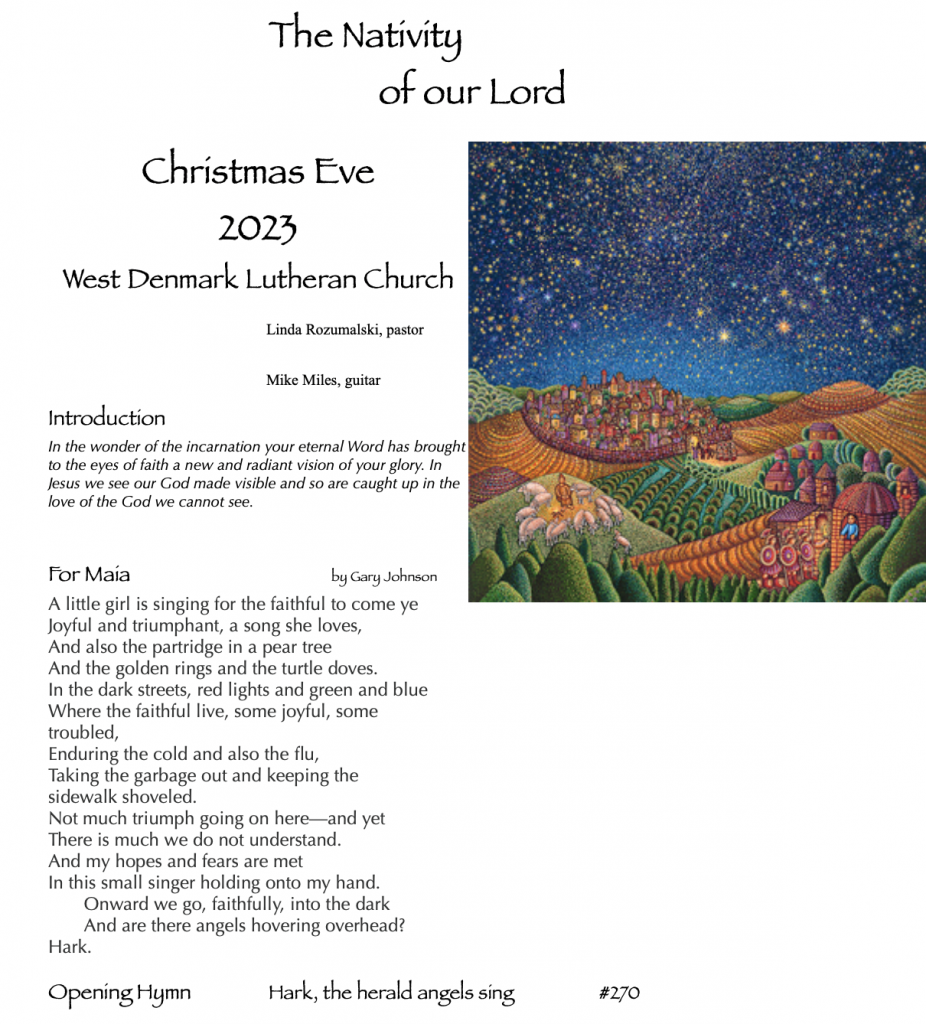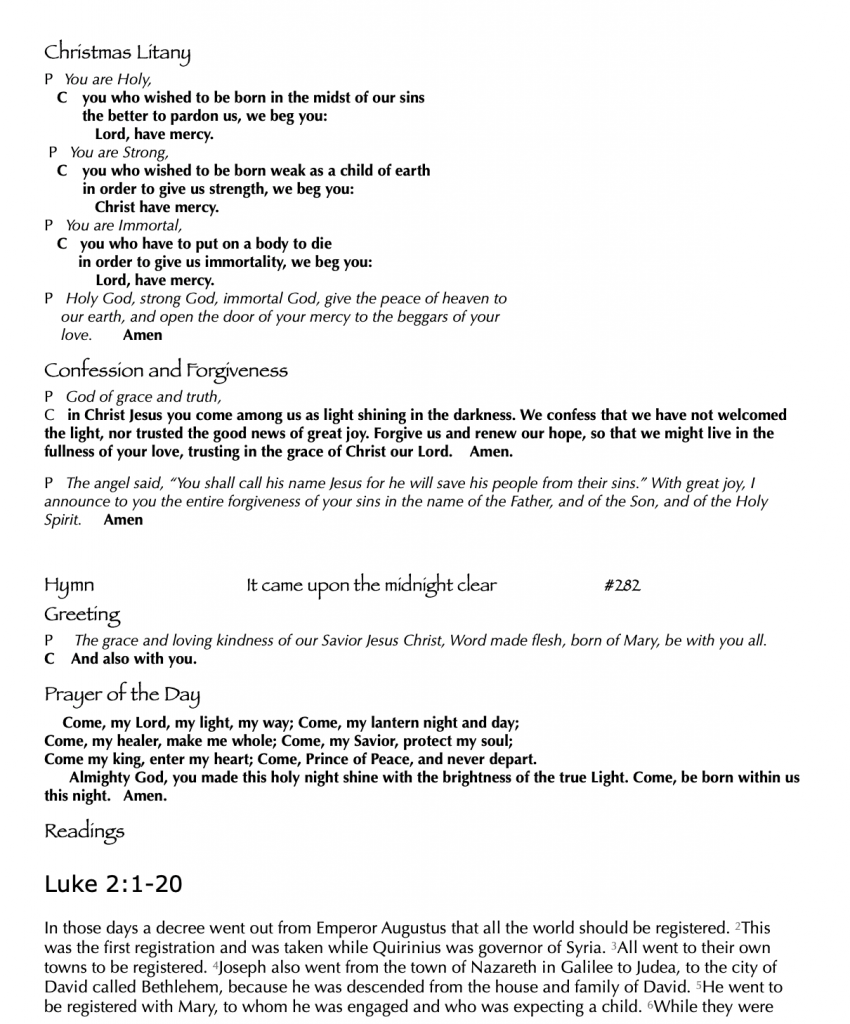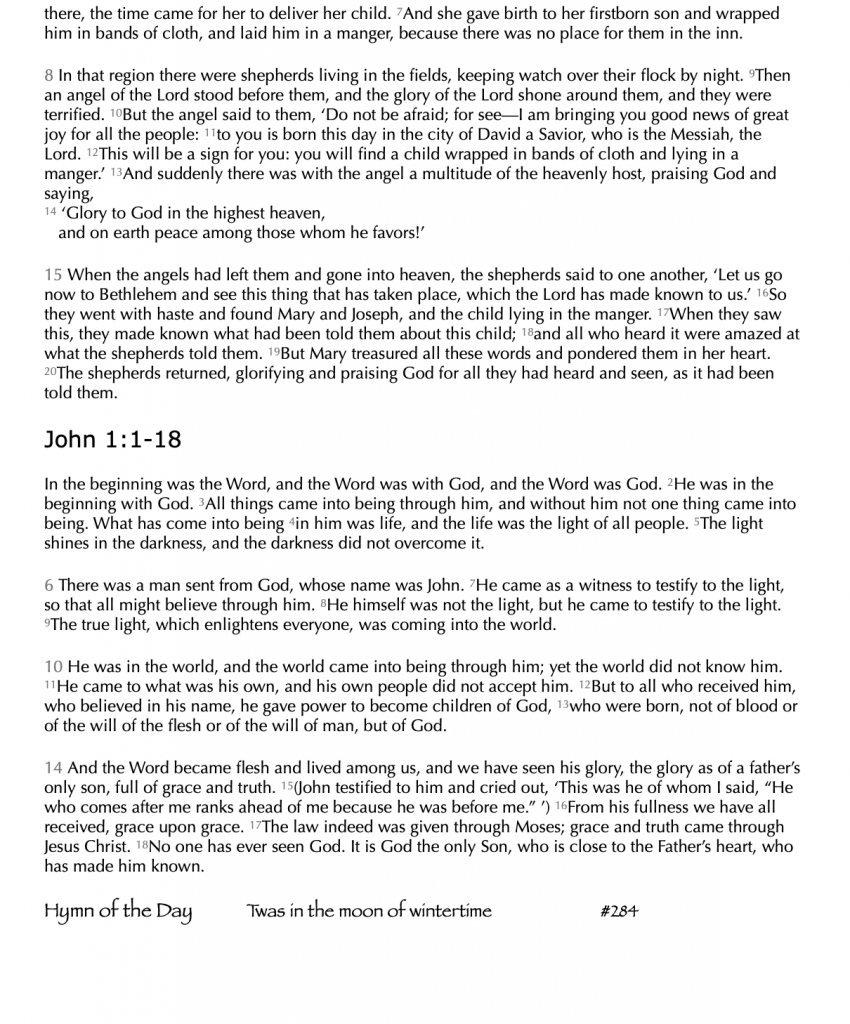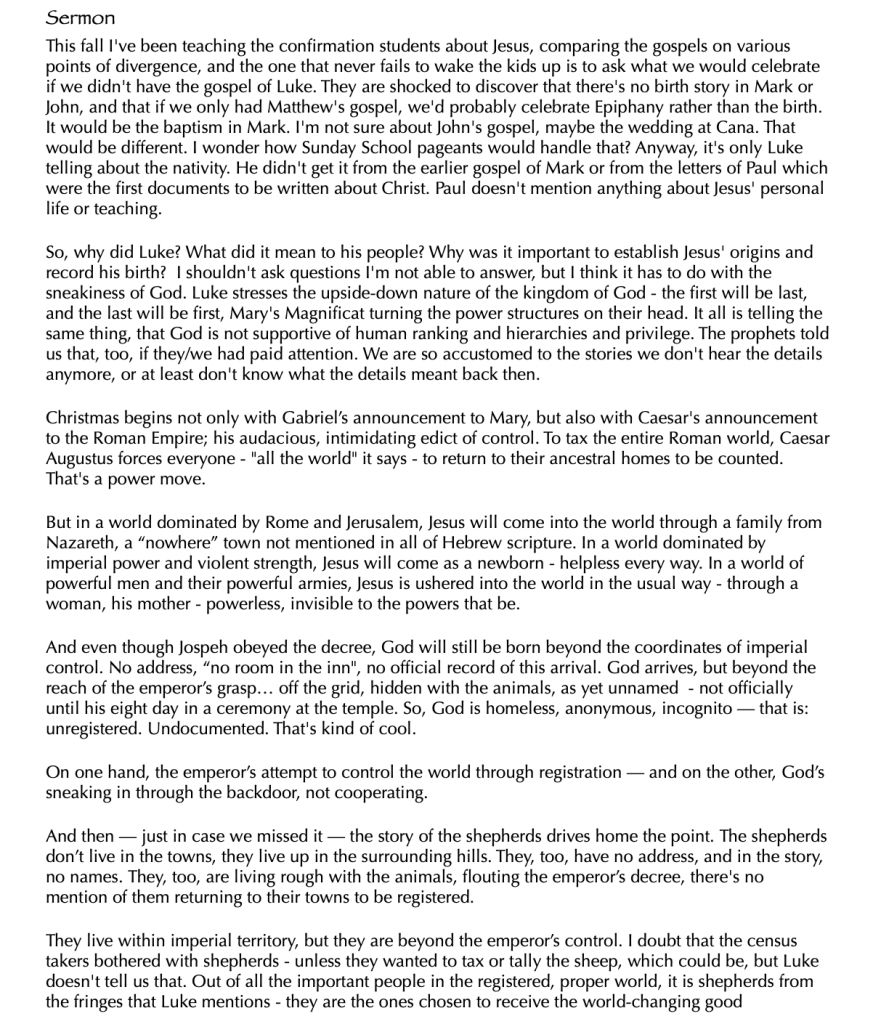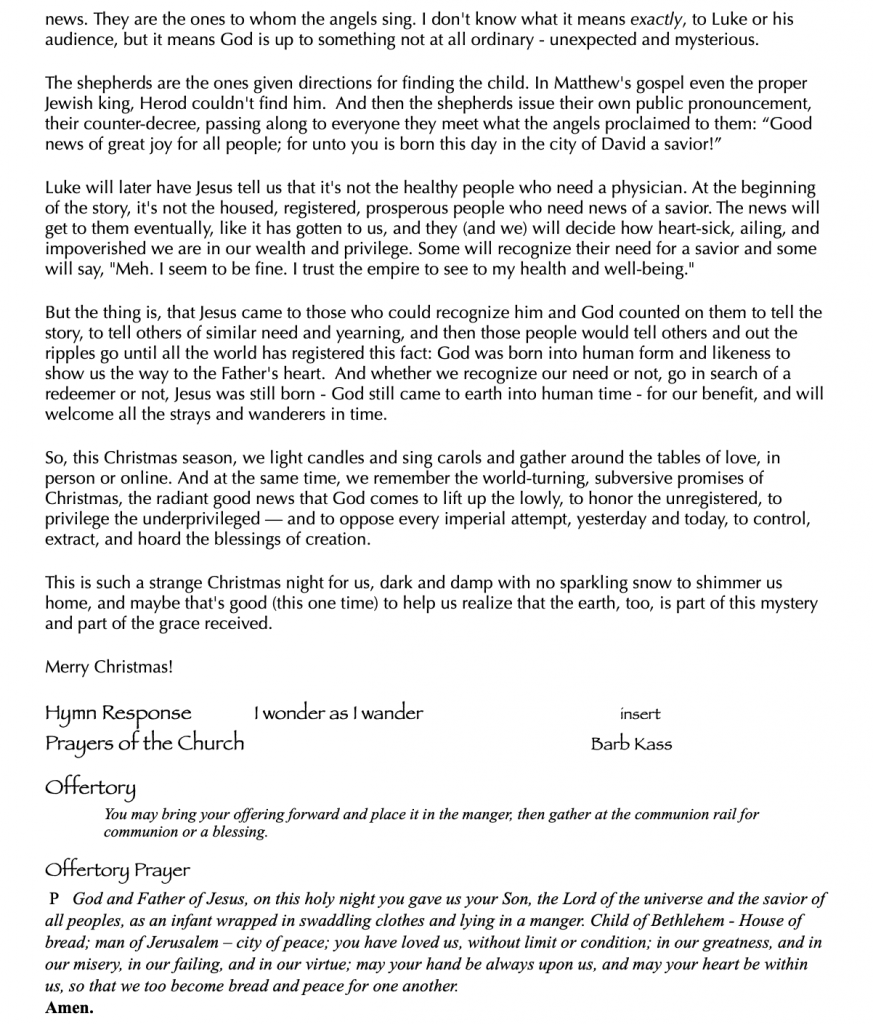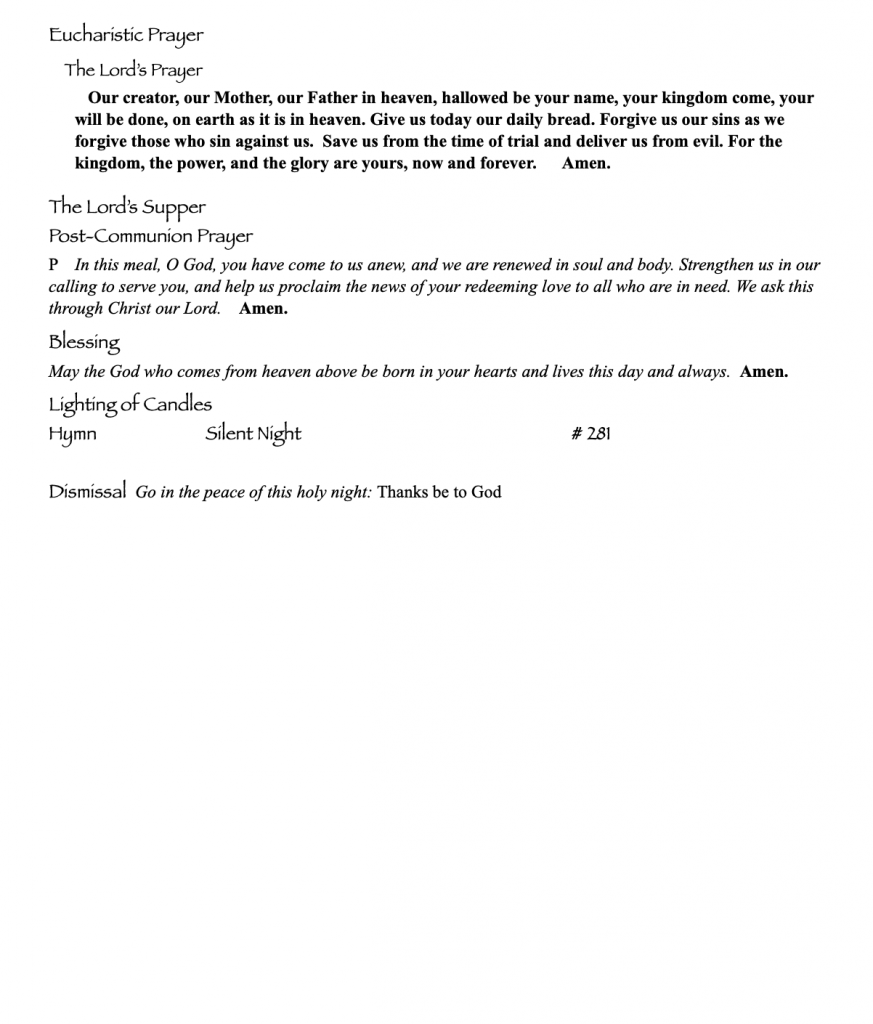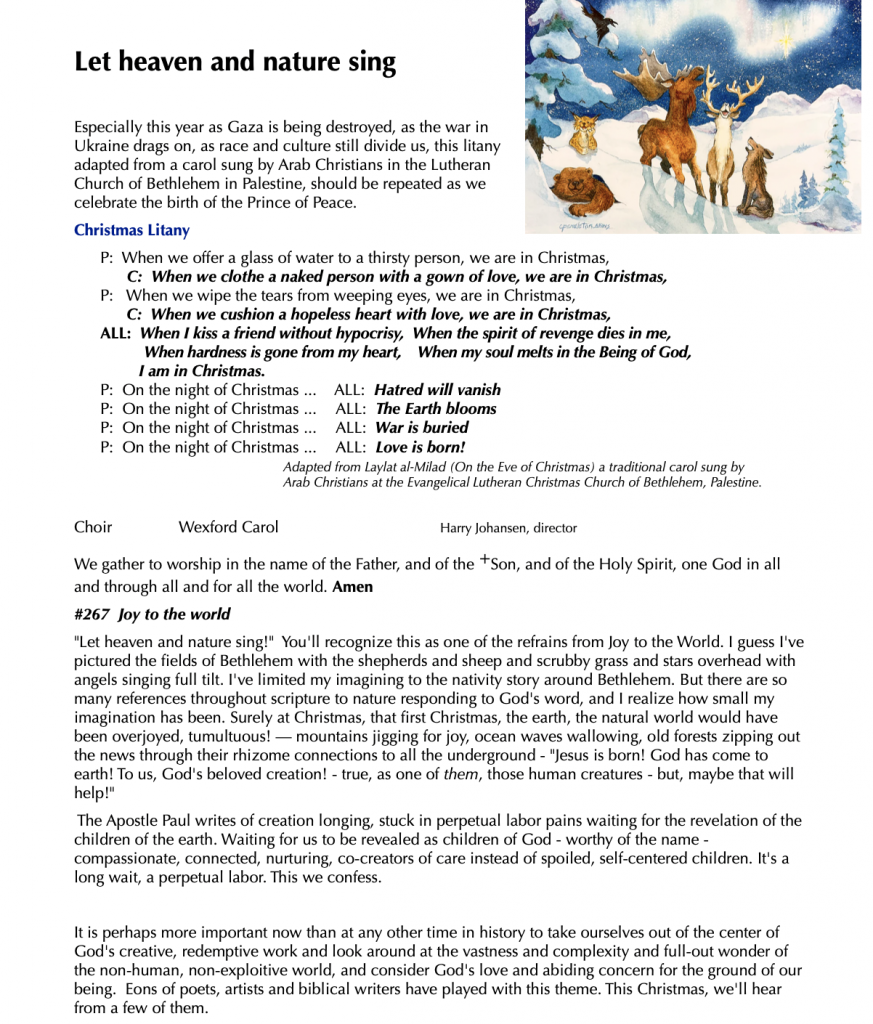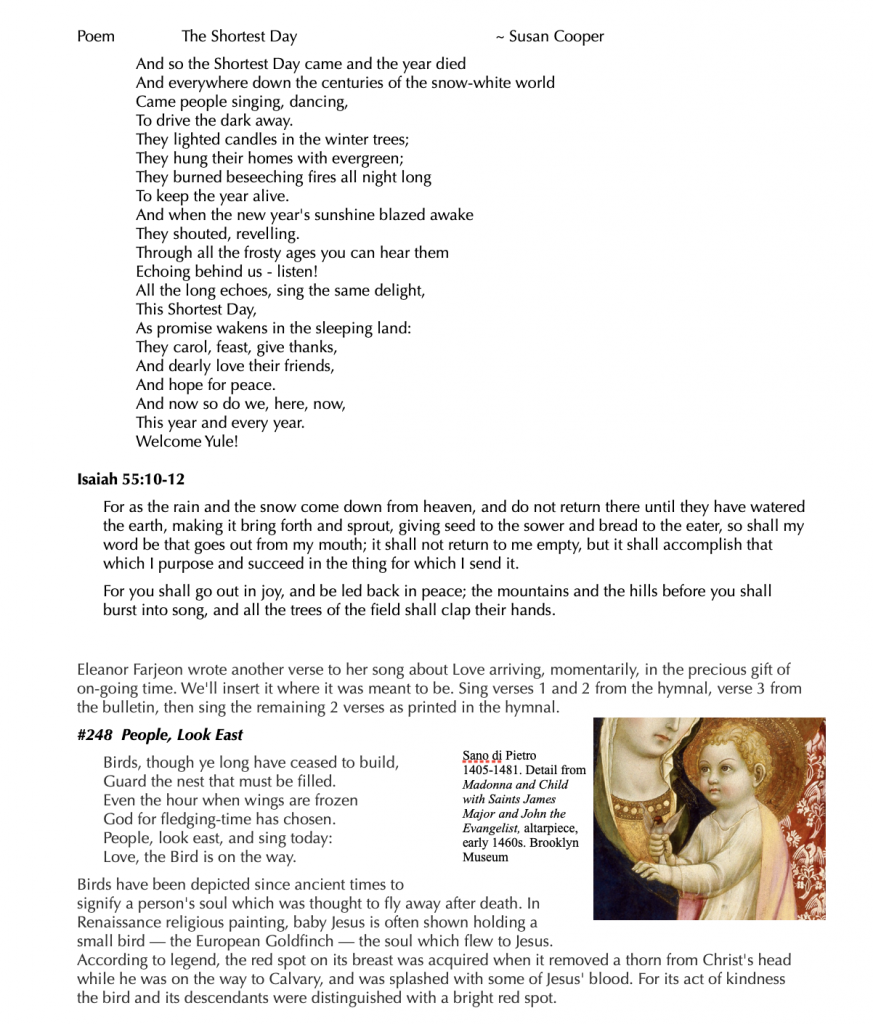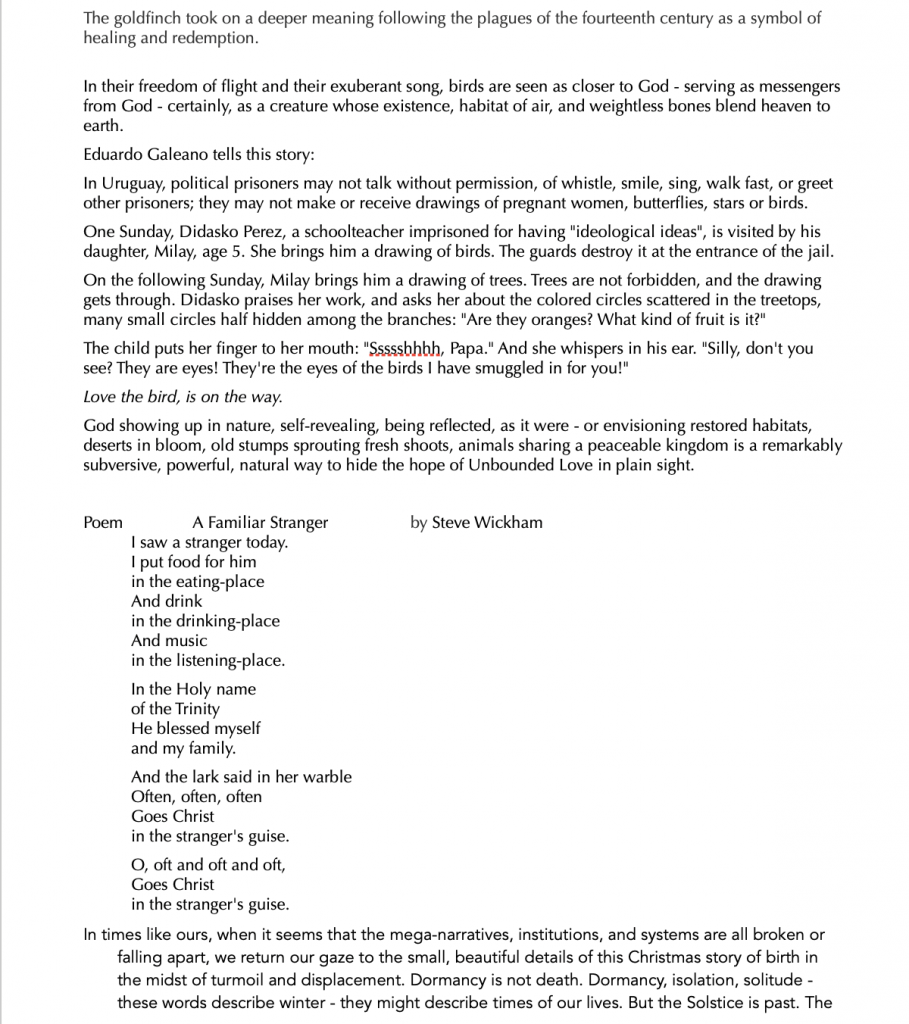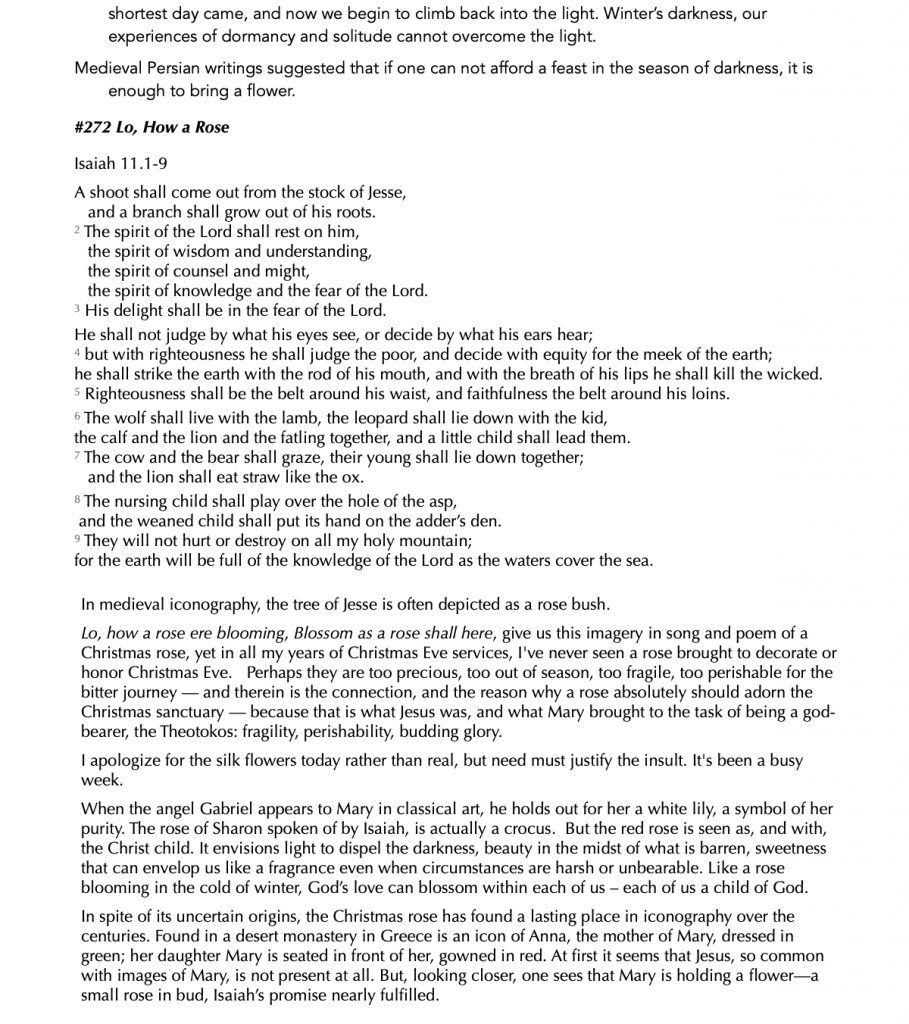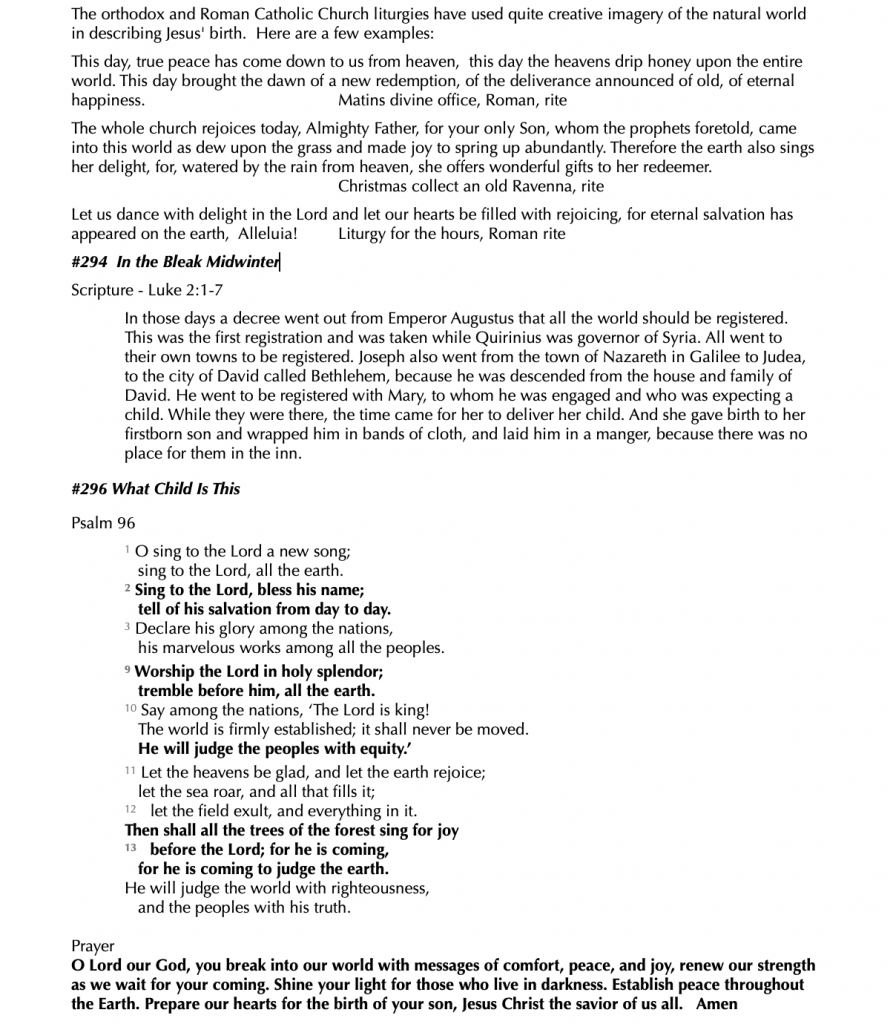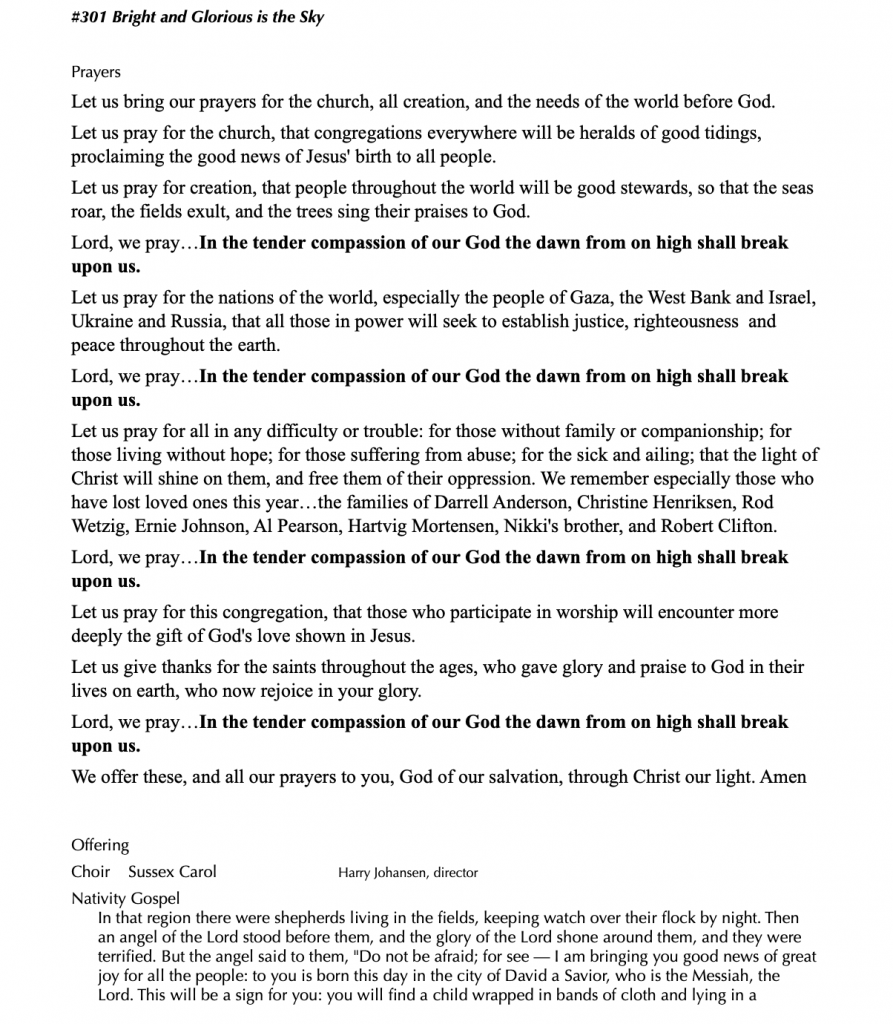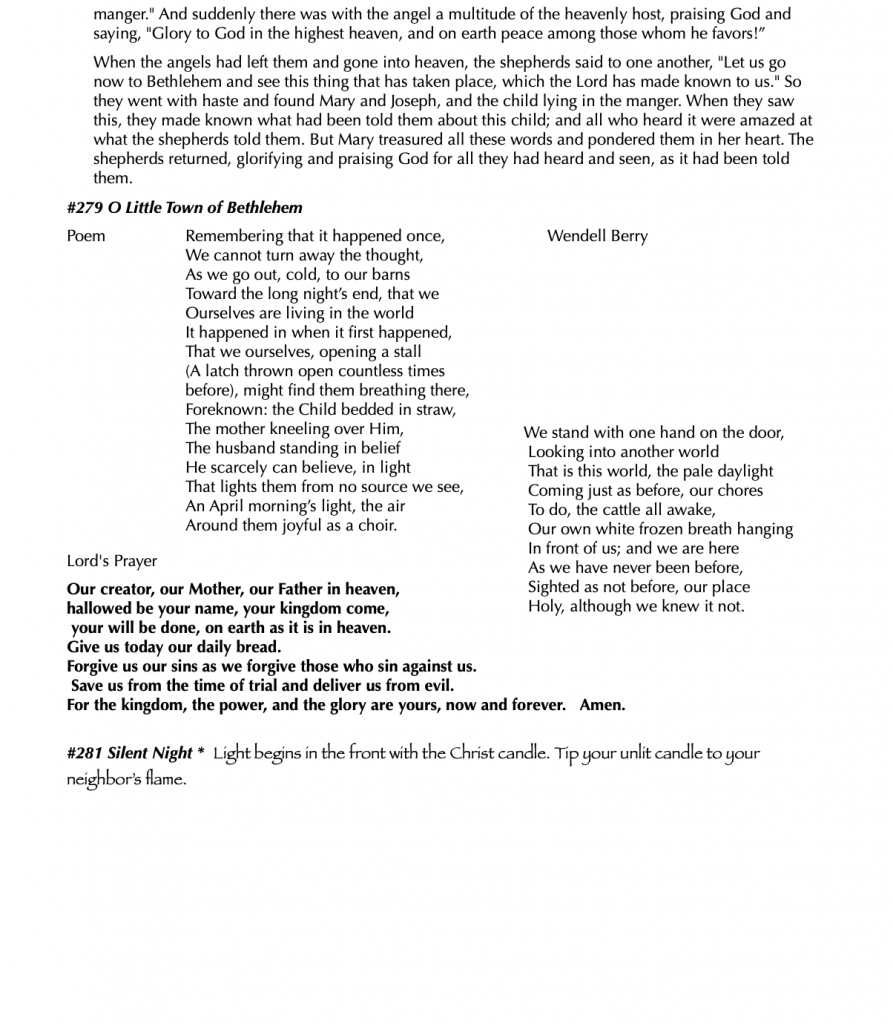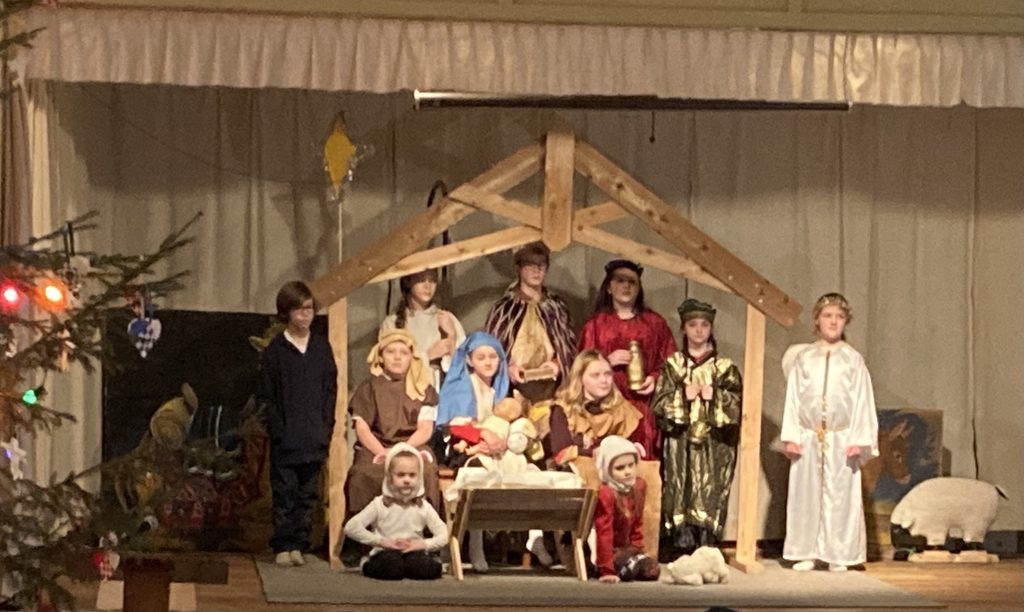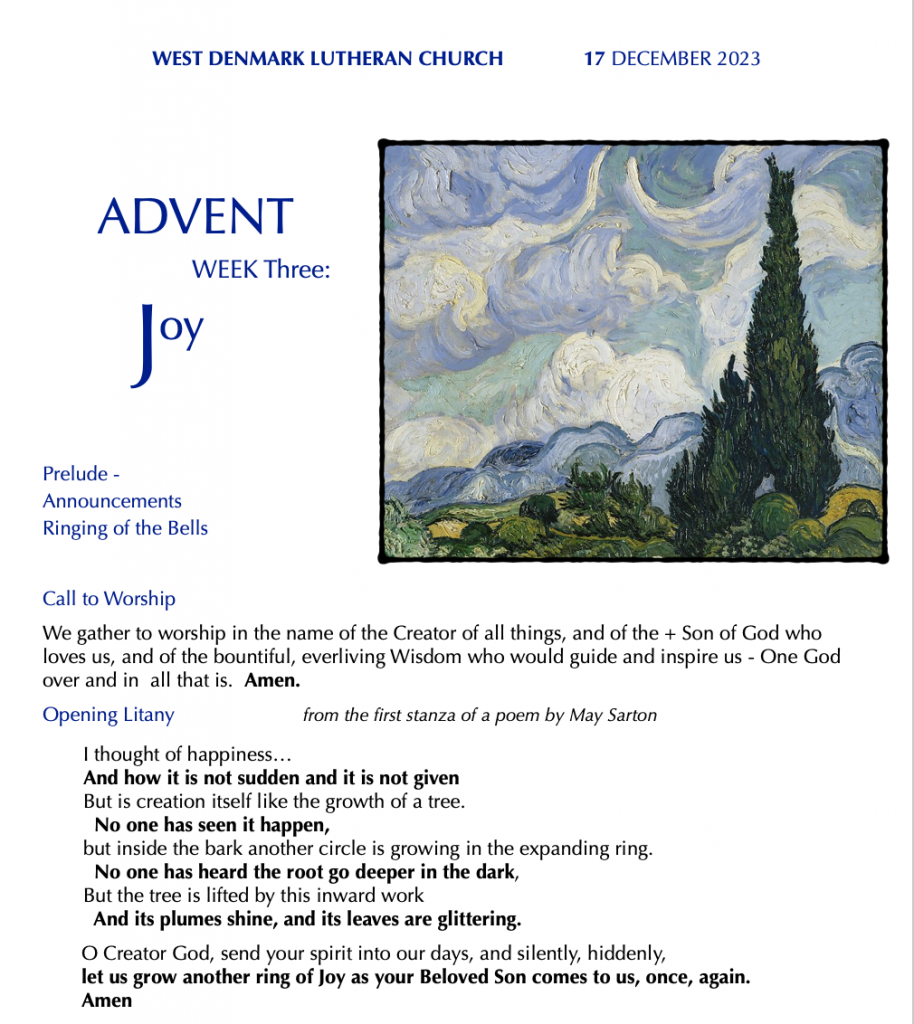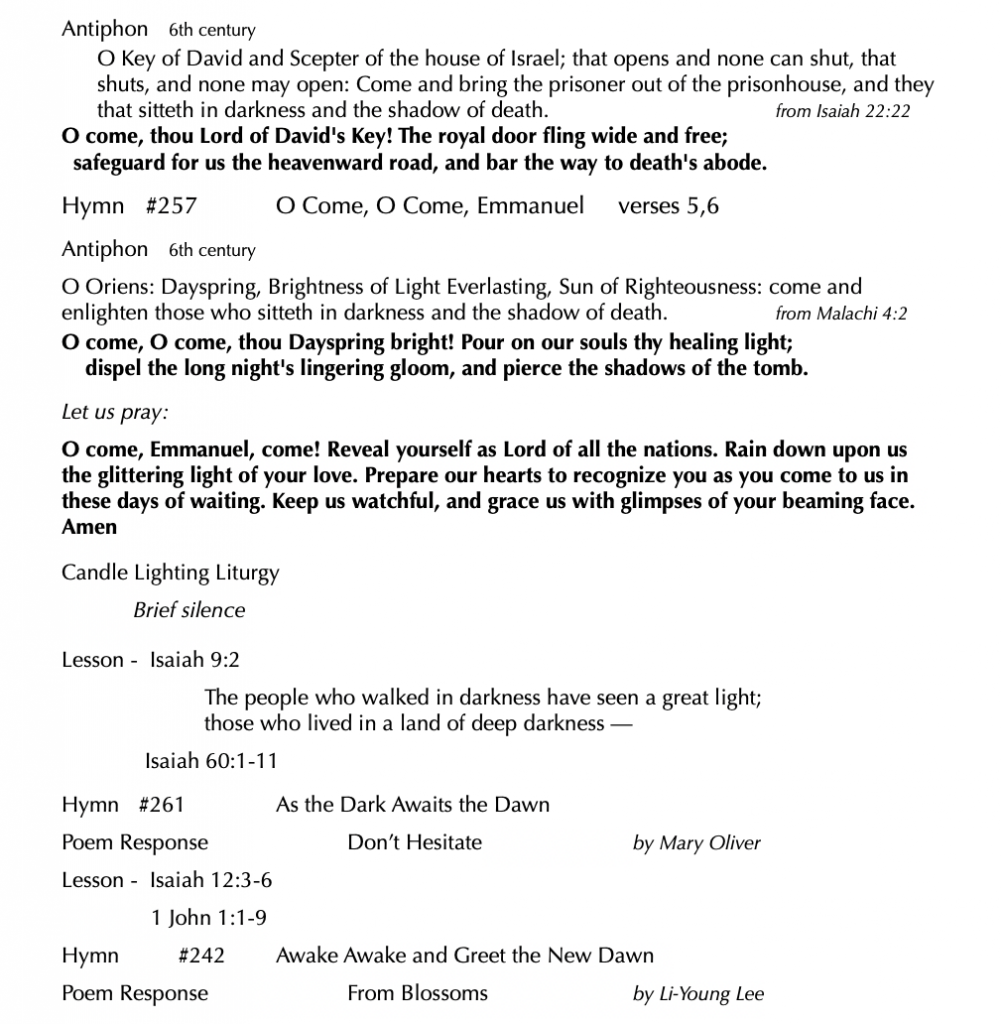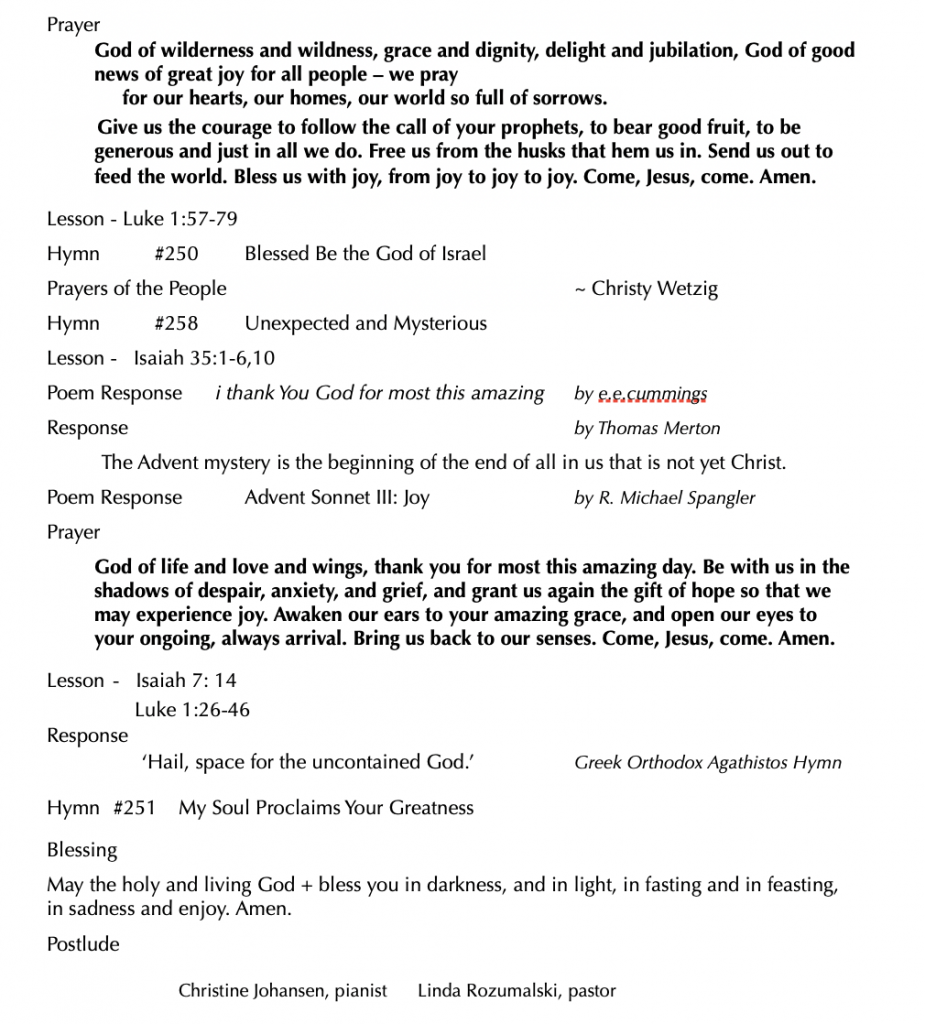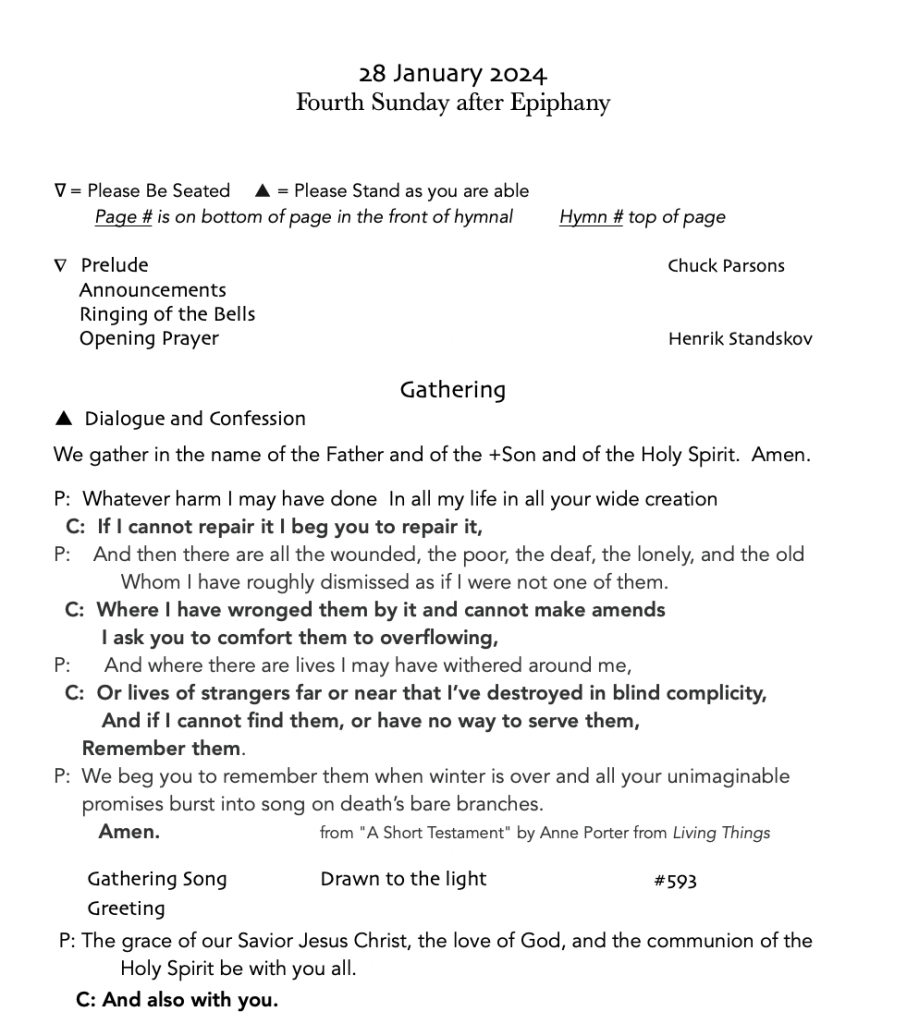
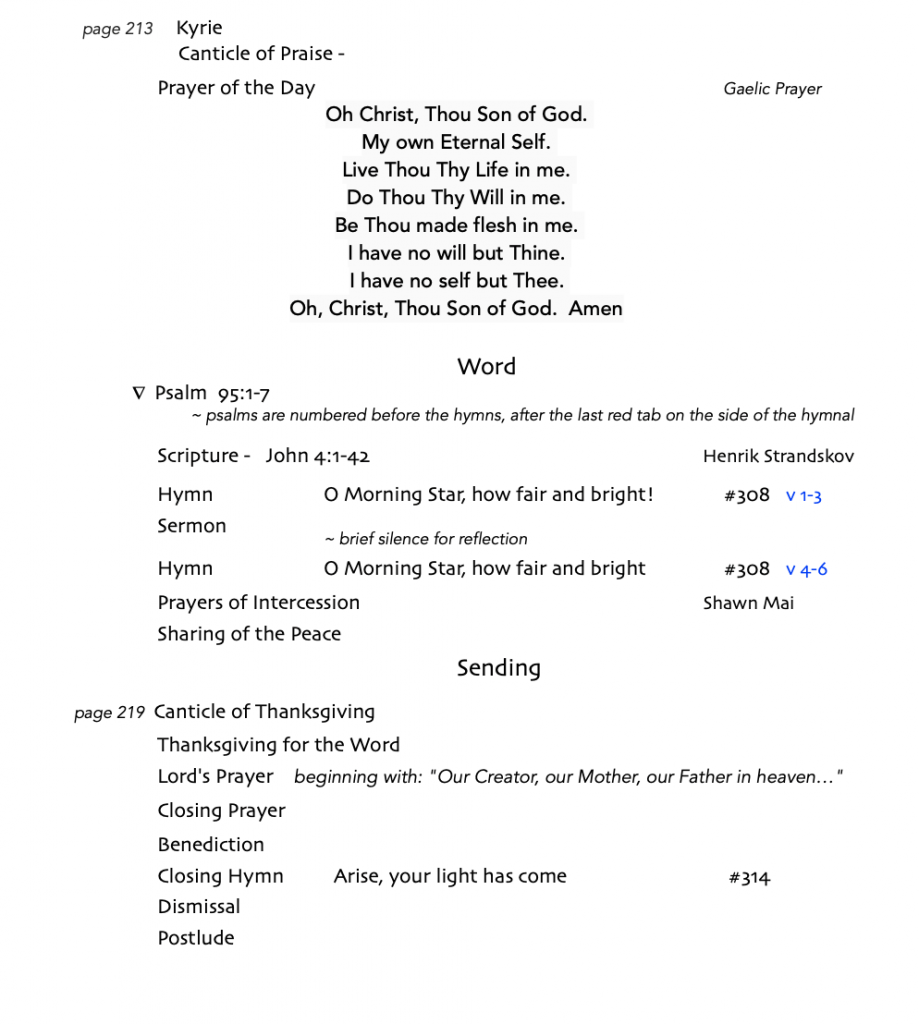
Last week, we heard briefly about Nicodemus who comes to Jesus under the cover of darkness. He holds on for nine verses in a bewildering conversation with Jesus before he fades again into the night from whence he came. This week narrates the next encounter with Jesus. He is in Samaria. The reading tells us it was necessary for him to pass through Samaria. It wasn’t, actually. He could easily have skirted this territory of Samaritans. But, it was “necessary” for the insights it gives into the nature of God’s love.
Nicodemus comes as a person of authority and standing. He is a man, and a Pharisee – a leader of the Jews. He has a name. Nicodemus is a person inside (and integral to) the religious loop; one who represents the community’s best judgment. But, he comes to Jesus at night.
By comparison, this woman comes not to Jesus, but to the well. She’s on about her daily business. Jesus has positioned himself there – walking through Samaria for some purpose of his own design – it was more direct, but also more dangerous. Anyway, the Woman arrives without a name; her identity is obscured by descriptions of her exclusion. As a Samaritan, her people are marginalized by Jews for their lack of ethnic purity and for their worship tradition of believing Mt Gerazim to be sacred ground.
As a woman, she lives her daily life in the shadows of her own marginalized status: work that goes nowhere, and relationships much like her work. One marriage dissolves into the next, without much to show for it, like drawing water from an old well, only to return the next day out of need and emptiness. But she has terrific qualities like curiosity and confidence: she speaks to Jesus under the sweltering heat of a midday sun and she holds her own.
Unlike Nicodemus, who sneaks through the streets of Jerusalem in shadows, this dialogue dances in broad daylight, raising eyebrows almost immediately: “How is it that you, a Jew, asks a drink of me, a woman of Samaria?” she asks. The disciples seem to be just as shocked by this conversation when they stumble into it midway.
The contrasts between these stories illustrate John’s themes of darkness and light, seeing and faith, secrecy and truth telling.
My hometown Methodist pastor, Ray Robinson, used to end each service saying: “The light shines in the darkness, and the darkness did not overcome it!”
It might be a good practice— or now, as preparation and as context for what we are about to hear: “What has come into being in him was life, and the life was the light of all people. The light shines in the darkness, and the darkness did not overcome it.”
Now when Jesus learned that the Pharisees had heard, ‘Jesus is making and baptizing more disciples than John’— although it was not Jesus himself but his disciples who baptized— he left Judea and started back to Galilee. But he had to go through Samaria. So he came to a Samaritan city called Sychar, near the plot of ground that Jacob had given to his son Joseph. Jacob’s well was there, and Jesus, tired out by his journey, was sitting by the well. It was about noon.
A Samaritan woman came to draw water, and Jesus said to her, ‘Give me a drink’. (His disciples had gone to the city to buy food.) The Samaritan woman said to him, ‘How is it that you, a Jew, ask a drink of me, a woman of Samaria?’ (Jews do not share things in common with Samaritans.) Jesus answered her, ‘If you knew the gift of God, and who it is that is saying to you, “Give me a drink”, you would have asked him, and he would have given you living water.’ The woman said to him, ‘Sir, you have no bucket, and the well is deep. Where do you get that living water? Are you greater than our ancestor Jacob, who gave us the well, and with his sons and his flocks drank from it?’ Jesus said to her, ‘Everyone who drinks of this water will be thirsty again, but those who drink of the water that I will give them will never be thirsty. The water that I will give will become in them a spring of water gushing up to eternal life.’ The woman said to him, ‘Sir, give me this water, so that I may never be thirsty or have to keep coming here to draw water.’
Jesus said to her, ‘Go, call your husband, and come back.’ The woman answered him, ‘I have no husband.’ Jesus said to her, ‘You are right in saying, “I have no husband”; for you have had five husbands, and the one you have now is not your husband. What you have said is true!’ The woman said to him, ‘Sir, I see that you are a prophet. Our ancestors worshipped on this mountain, but you say that the place where people must worship is in Jerusalem.’ Jesus said to her, ‘Woman, believe me, the hour is coming when you will worship the Father neither on this mountain nor in Jerusalem. You worship what you do not know; we worship what we know, for salvation is from the Jews. But the hour is coming, and is now here, when the true worshippers will worship the Father in spirit and truth, for the Father seeks such as these to worship him. God is spirit, and those who worship him must worship in spirit and truth.’ The woman said to him, ‘I know that Messiah is coming’ (who is called Christ). ‘When he comes, he will proclaim all things to us.’ Jesus said to her, ‘I am he, the one who is speaking to you.’
Just then his disciples came. They were astonished that he was speaking with a woman, but no one said, ‘What do you want?’ or, ‘Why are you speaking with her?’ Then the woman left her water-jar and went back to the city. She said to the people, ‘Come and see a man who told me everything I have ever done! He cannot be the Messiah, can he?’ They left the city and were on their way to him.
Many Samaritans from that city believed in him because of the woman’s testimony, ‘He told me everything I have ever done.’ So when the Samaritans came to him, they asked him to stay with them; and he stayed there for two days. And many more believed because of his word. They said to the woman, ‘It is no longer because of what you said that we believe, for we have heard for ourselves, and we know that this is truly the Saviour of the world.’
We begin today at a well. It’s not just any old well; we are told it’s Jacob’s old well.
Every detail, every symbol in John, is crafted intentionally. Jacob’s well was the assurance of God’s provision for ancient Israel. It is still in existence today, some 4000 years after Jacob acquired the land, nearly 2000 years after this gospel was written. The well has not run dry. It lies within an Orthodox monastery in the West Bank. It is a symbol even now of living water, that fills to the brim and runneth over.
Jesus is sitting there, by the well, while the disciples go into the town for food.
A woman approaches. A conversation ensues.
If these readings weren’t separated by weeks between Sundays, we would still be hearing echoes of that boisterous wedding in Cana where water drawn from a well transfigured into amazingly fine wine. These two stories are the only times the terms for ‘water jar’ and ‘drawing from a well’ are used in the whole of the New Testament. John’s repetition is not by accident.
The storyteller’s fun begins with Jesus sitting at this well asking for a drink. The woman doesn’t know what we know about Cana. She just knows that it’s odd for a man to ask a woman for a drink, and he’s a Jewish man besides, and so would never touch a Samaritan’s ladle or water jug or personage, and what is he doing sitting alone by our well in the first place, she wonders?
Jesus’ reference to living water is a play on words in Greek, continuing the baffling trend of his conversation with Nicodemus. Living water can mean water that is flowing (a stream or creek or spring rather than a pond or pool or puddle). It can mean fresh water rather than salt (the Sea of Galilee rather than the salty Dead Sea), and, it also can mean “alive.” The woman first understands Jesus to be referring to water from the well – and asks how he plans to give her this interesting gushing, living water without a bucket. Clearly he would need to pull off some kind of miracle — implying that he couldn’t possibly pull off some kind of miracle. And, as though the answer is devastatingly obvious, she then asks if he is greater than their ancestor Jacob, who gave them the well in the first place.
Jesus misdirects, leaving the well behind, changing the imagery to a gushing spring, eternal, life giving, glorious water.
And unlike Nicodemus, who wasn’t able to shift categories that quickly, the woman tracks along with him. She quickly realizes that this is not ordinary water Jesus is talking about – and impulsively? intuitively? asks for it, not waiting to understand.
And that is a key feature — of this story, and in the contrast with Nicodemus, and is the thrust of the gospel of John. “Blessed are those who have not seen, and yet believe.” Jesus says this at the very end, when Thomas has touched Jesus’ crucifixion wounds and finally confesses his belief. “I’m glad for you, Thomas,” Jesus says, “but Blessed are those who have not seen, and yet believe.”
Because, that’s what gospels are supposed to do — create faith in those who were not there, who did not see, who could not come around at night and ask questions, who have only this word, this living Word to go by, and yet, who come to believe that Jesus is the Christ, the anointed one of God, and that God raised him from death, and will do so for all believers when time is completed.
There are a lot of things I don’t like about the gospel of John (I should probably stop saying that about the Bible), but even so, this is the gospel that gets to me, whose characters and stories resonate and seem to dwell within me. This is the gospel that doesn’t quite let me go. It has created faith in me. I’m curious about how that goes for you – if it is this or another gospel, or something from Paul’s writing, or… What is it that creates and sustains faith in you? I would love to have that conversation. *
As soon as the woman asks for living water, the conversation shifts to her living, and Jesus tells her everything she has ever done, as she later tells her townspeople.
Although Jesus seems to know everything about her sequential marriages, he offers not one word of judgment. He asks for no repentance; no confession of sin. He doesn’t ask her to explain herself, to justify her existence. None of that…. His knowledge of her is about something other than condemnation. Perhaps it is compassion, perhaps it’s recognizing the abuse and secret shame too many women harbor and would rather hide than confess or be confronted with at midday, in the town’s center, by a stranger. Whatever Jesus’ motivation, what he gives her is pure invitation.
If we bear in mind that “seeing,” in John, is both belief and vision, then the story itself becomes a word play. When the woman says, “I see you are a prophet,” she is not awkwardly deflecting her embarrassment and shame, nor is she making a joke; she’s making an insightful confession of faith.
Jesus has “seen” her. He has recognized her, spoken to her, offered her something of incomparable worth. She exists for him, has value and significance. This is not how men and women, strangers, Jews and Samaritans interact! And so when he speaks of her past without malice or a come-on, she is startled into seeing him differently, and the conversation is allowed to take another turn.
She risks asking the central question that had divided Samaritans and Jews for centuries: where is the proper place of worship? Where does the presence of God abide – on Mt. Gerazim or in the temple in Jerusalem? This is no awkward dodge or diversion. It’s a heartfelt question that gets to the core of what separates her from Jesus.
“The hour is coming, and is now here”, he says, “when true worshipers will worship the Father in spirit and truth, for the Father seeks such as these to worship him.” I love that line. the Father seeks such as these
She leaves her water jar behind and runs to tell her neighbors about this man.
What is life-changing for the woman – according to her – is that she has been entirely known by him. Jesus performed no miracle, he didn’t produce the living water. He talked to her. He looked her in the eyes. He saw her. I think, at some level, this is what we all long for. To be known and accepted. Perhaps you can understand how this would transform “the woman.” She doesn’t tell her people, “I have met someone who said “I am God, I am the Lord!’” (even though he did, and that would have caused some kind of stir). She says, “He has told me everything about my life – he has seen me.” That’s what impressed her, being known, being seen through, with no judgment, no criticism, no pity, no blame. And this being known, this way of loving, enabled her to know him. This is the first time, the first person, to whom Jesus says, “Ego eimi, I am” – the name of God.
The extraordinary twist of this story is not simply that Jesus is kind to her – a mis-married Samaritan woman at a well – the twist is that she becomes a witness for him. She’s not certain that Jesus is the Christ, but she doesn’t let that stop her. She moves beyond her doubt and surprise to questions, to figuring-this-out engagement, to intuition that might be called inspiration. The woman at the well is a better disciple than the whole lot of them at this point; and a better example for us to follow.
She shows us that faith is about conversation not conversion, it’s a communal, organic, drawing-in from where ever someone stands. It’s about growth and change. It is not about having all the answers. If we think we have the answers, if we are content with our old images and formulations, if we believe more in our own convictions about Jesus or God than in the possibility of new information and inspiration, then we will be left trying to defend those stagnant beliefs, to bolster them up, to protect our faith from life and change. We will take after Nicodemus.
Life doesn’t stand still: neither can faith. Not even when we want it to.
While Nicodemus’s last questioning words to Jesus expose his disbelief, “How can this be?” the last words of the woman, also posed as a question, lead her people to find out for themselves, to discover, to encounter, to invite Jesus to stay/abide and dwell with them as God stays/abides and dwells in him. “Come see,” she says, echoing what Jesus said to his brand new disciples. “He cannot be the Messiah, the Christ, the coming one…. can he?”
In the presence of the “light of the world,” she leaves behind her “ordinary” to share in the extraordinary news of the one who sees us truly and deeply, who loves us as we are, and who commissions us to have the courage and the wherewithal to drop anything that isn’t that extraordinary, and go share this good news, this vision of love, with others who stand in need.
The light shines in the darkness…

